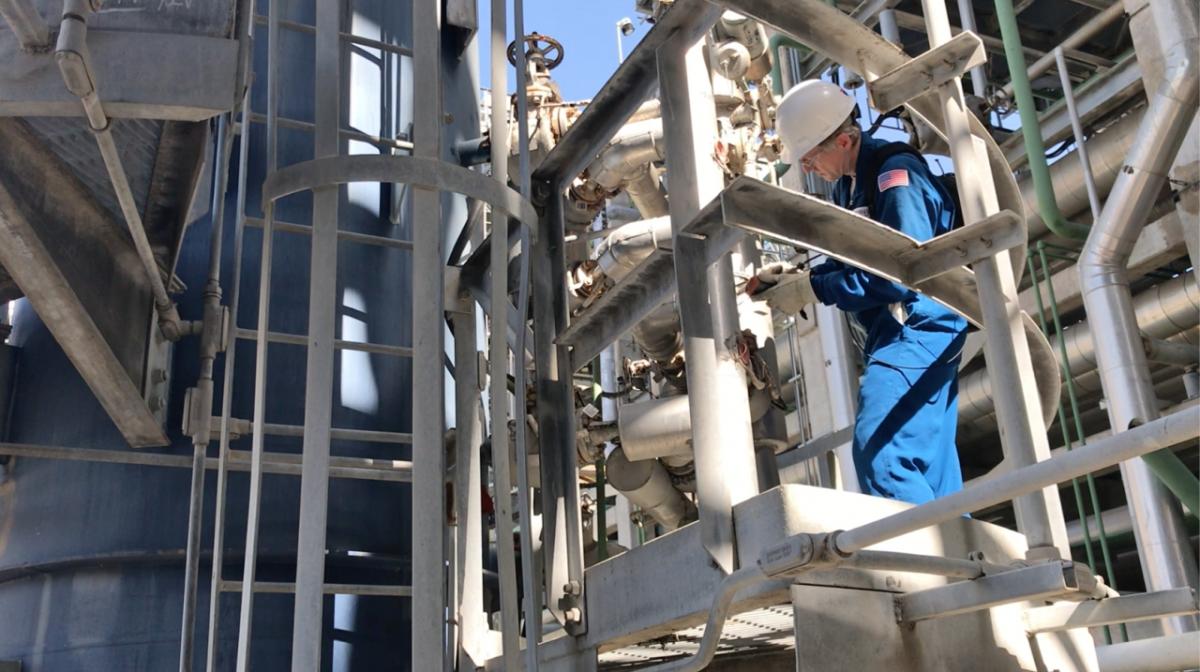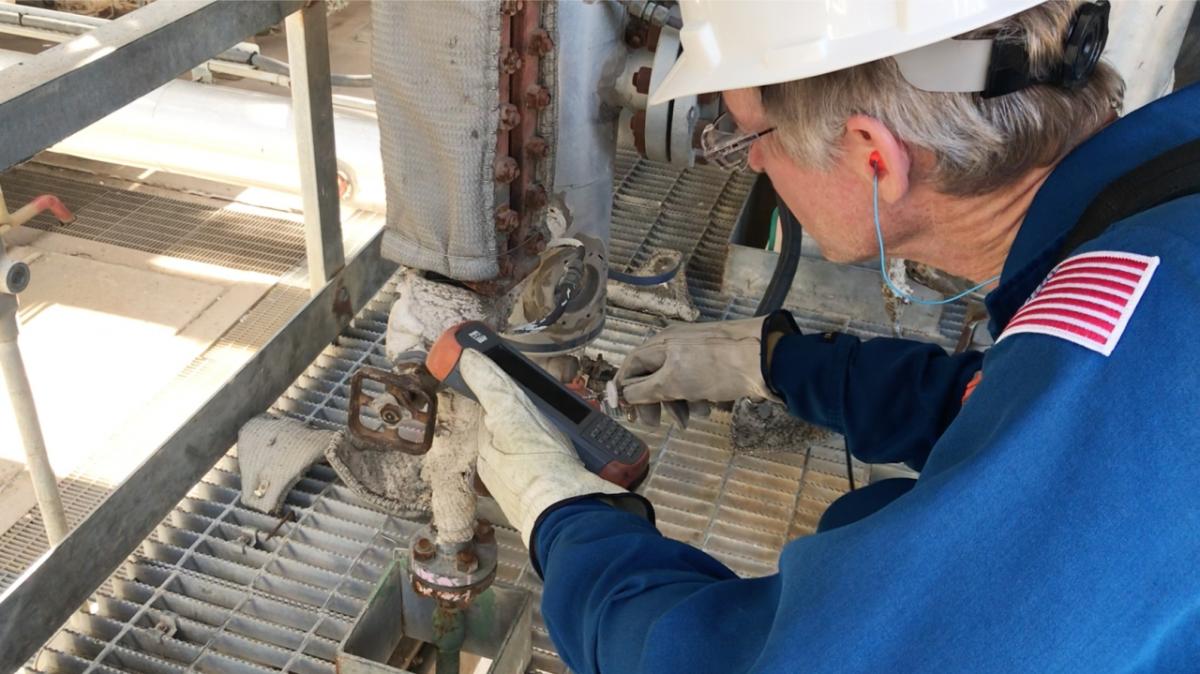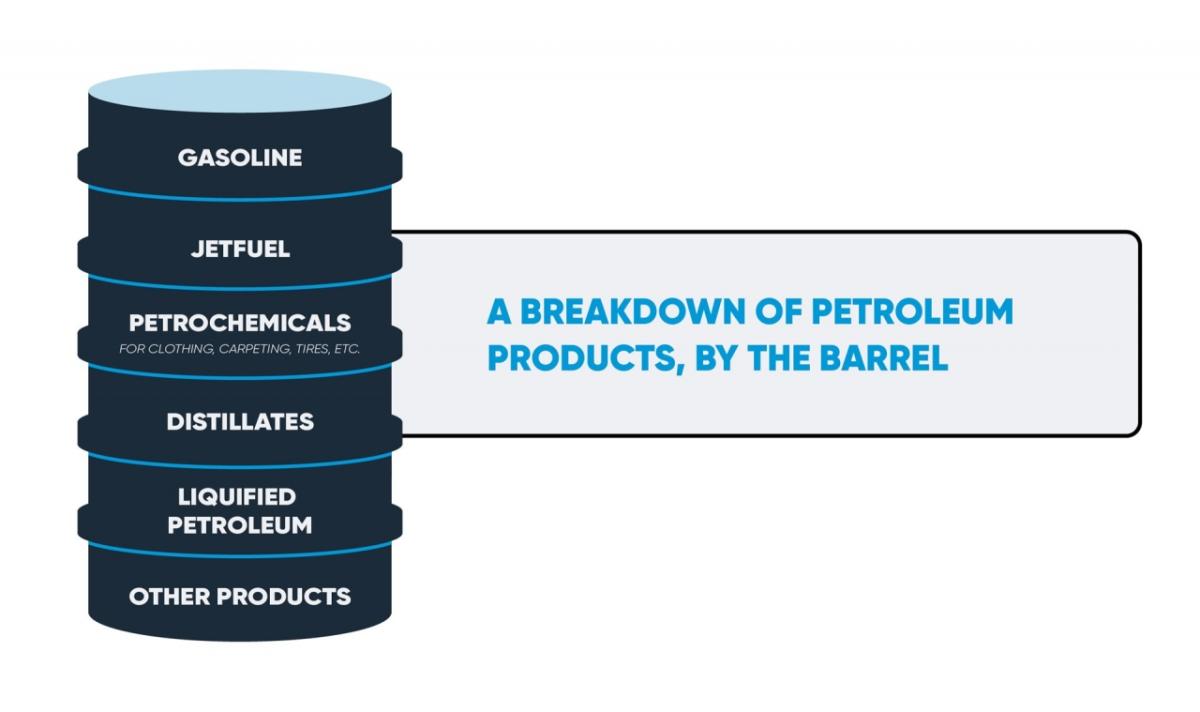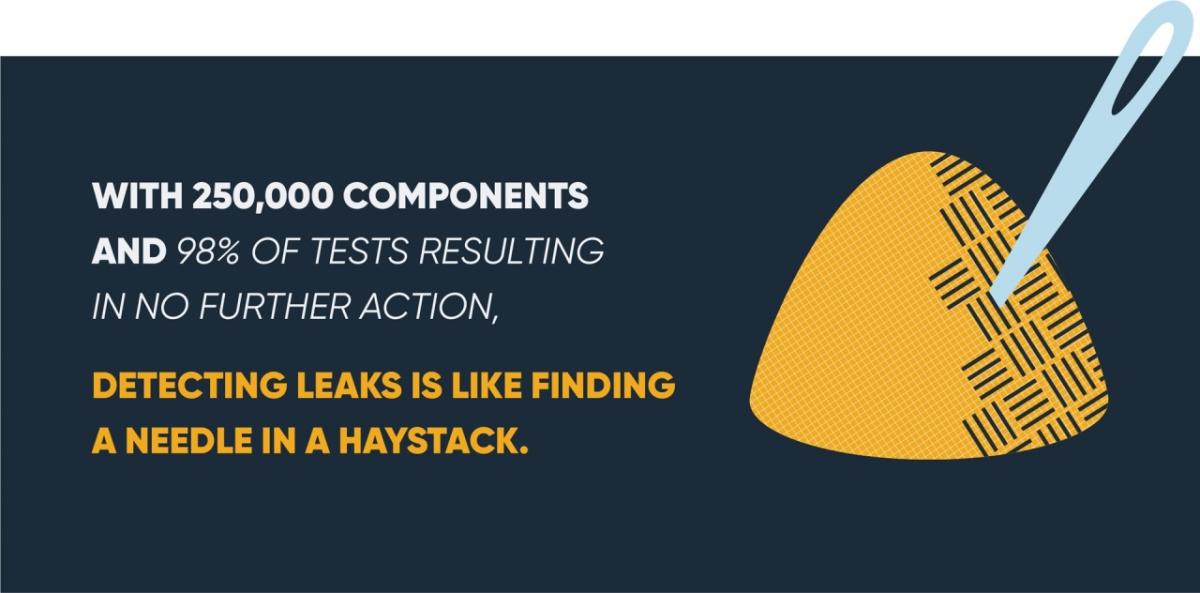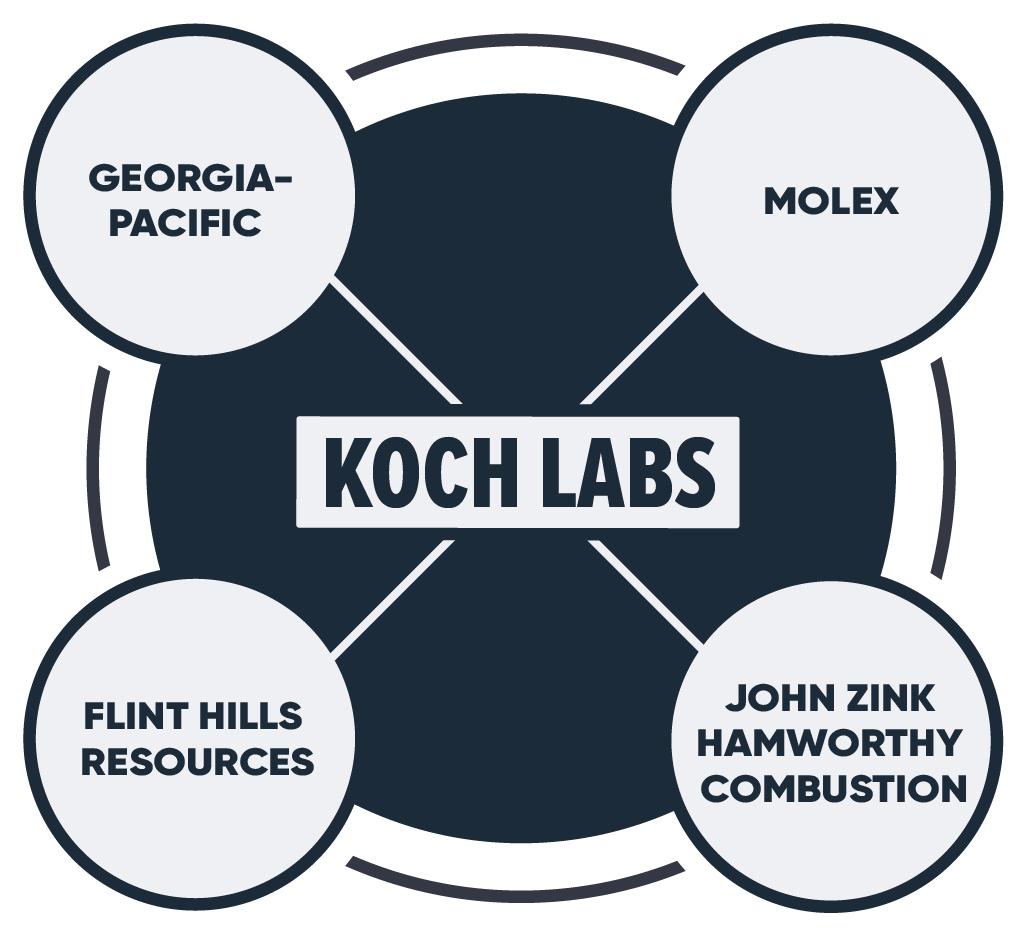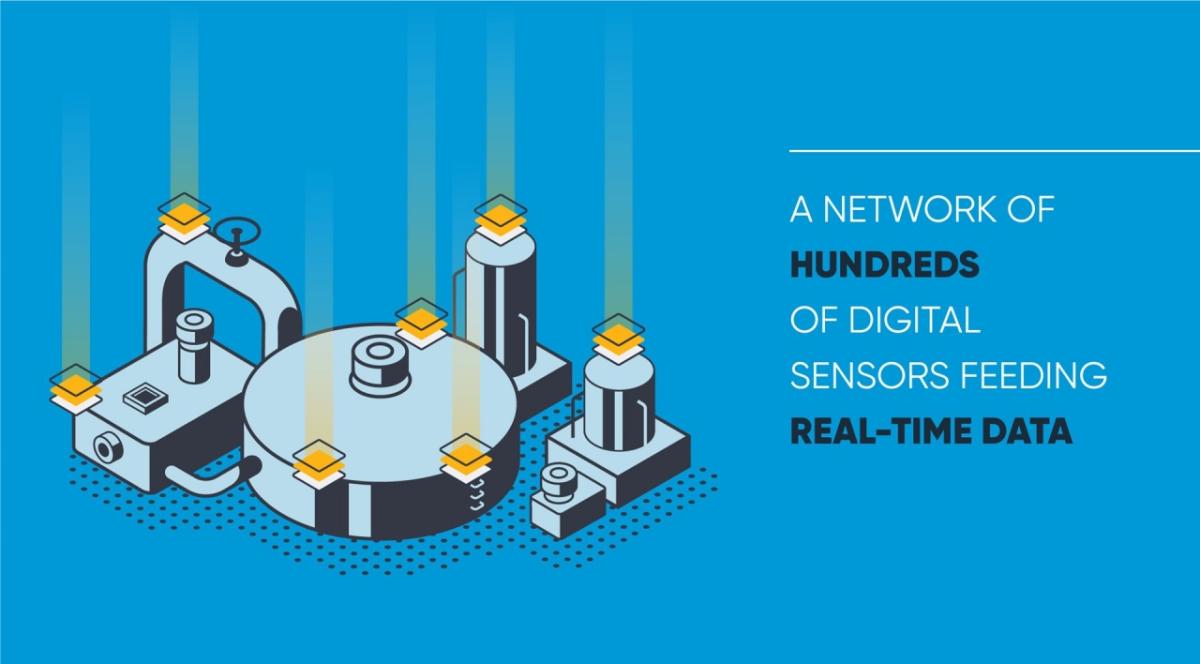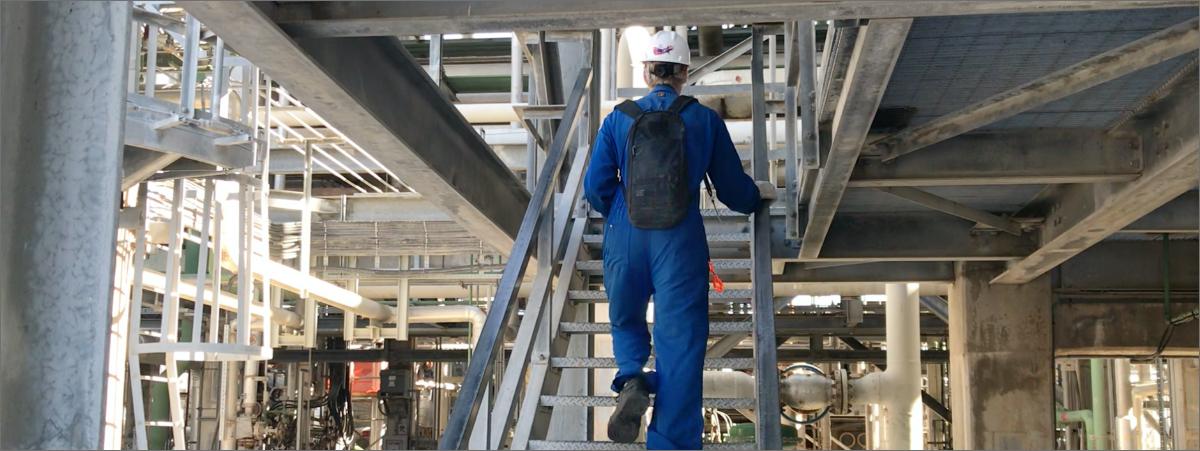Paradigm Shift: Industry Veterans Harness Cutting-Edge Technology to Identify Leaks
Koch companies Molex and Flint Hills Resources are teaming up to rethink standard leak detection processes using hundreds of sensors and software that transform the way people work
There’s not much that Flint Hills Resources’ Mike Clausewitz and Deb Preschler don’t know about safely refining oil and producing petrochemicals. Deb, an operations innovation director, and Mike, an enterprise leak detection and repair (LDAR) execution lead, have together clocked up nearly 60 years at Flint Hills’ Corpus Christi East and West, two of the three Flint Hills Resources refineries that separate oil into jet fuel, low-sulfur gasoline, diesel and the petrochemicals used to manufacture clothing, carpet, tires and much more.
The two industry veterans work hard to keep these massive industrial facilities running smoothly, safely and environmentally compliant. Flint Hills Resources' Corpus Christi facilities can process 340,000 barrels of oil a day, equivalent to all of Australia’s daily production. In fact, the refining facilities are so big and bright, they have earned the nickname ‘the Emerald City’ among people in the community.
One perennial challenge for Mike and Deb is the process of monitoring for leaks across the giant facilities' 250,000 hardware components. Leaks may happen, which is why inspections and leak detection are an important part of daily operations. These potential leaks are mainly “fugitive emissions” of hydrocarbons escaping from pump seals, flanges and valves. Mike, Deb and the team are rising to that challenge, rolling out a transformational digital monitoring system at Flint Hills Corpus Christi that will enhance safety and reduce emissions across the facilities, as well as improve cost structure and competitiveness. “We wouldn’t have achieved this if Koch Industries didn’t have a commitment to technology and lifelong learning,” says Deb. “That has allowed me to take on something new and different, which has been really exciting.”
Traditional LDAR methods are a time-intensive and tedious task. Teams of technicians perform manual monitoring for these potential leaks at numerous locations across a refinery or plant. They lug around equipment that weighs around 40 pounds, which includes probes that sport flame ionization detectors, the instruments that measure the content of gas streams. Technicians, who need to relay their results back to a plant manager and the maintenance team, are monitoring for leaks in a challenging industrial environment. This includes scaling ladders, enduring a wide range of temperatures and working in tight spaces.
Detecting a leak is also like finding a needle in a haystack, because about 98% of the time, these laborious checks of seals and connections result in no further action. “You’re doing a ton of work, and 98% of what you’ve done ends up being just an inspection and check off a calendar event,” Mike says. “High turnover of technicians is one of the pain points we wanted to solve, because it’s not efficient to keep training new people, only to have them leave for other jobs after just a few months,” adds Deb.
Catching leaks may not sound glamourous, but it’s essential and extremely important work. “Safety is our number one concern, and leaks are diametrically opposed to those safety goals,” explains Brook Vickery, vice president and manufacturing manager at Corpus Christi. “Any leak of either feedstock, intermediate or product poses a risk that we work to mitigate immediately,” he adds.
The facilities also work hard to comply with rigorous environmental standards. Since 2002, Flint Hills has spent about $940 million on refinery modifications in Texas, with another $600 million committed to increase domestic crude oil processing and reduce emissions. “The fugitive emissions from those 250,000 individual components can add up,” explains Barry Kelley, corporate environmental leader at Koch Industries. “The fugitive emissions from a typical refinery or chemical plant can make up 30-40% of the overall VOC (volatile organic compound) emissions from that site.”
When an opportunity arose to tackle Flint Hills’ leak detection process in a new way, Deb, Mike and their colleagues leapt into action. It all started when Koch Industries acquired Molex, a leading manufacturer of electronic connection components. In the weeks after joining Koch, Molex engineers visited various Koch facilities to familiarize themselves with the largest business challenges. When the team at Flint Hills outlined their manual leak detection process, they received a promising response. “Molex thought they could help,” says Deb. “They didn’t yet have a sensing business, but they decided pretty quickly that this was an area where they wanted to go.”
At the same time, Charles Koch was pushing company leaders to embrace technology-driven transformation. “In 2017, he told us to do it or we’ll end up in the dumpster,” remembers Deb. “That made a lot of folks excited about exploring innovation.”
Combining technical expertise from Molex with existing software expertise, a new digital monitoring system would create a transformational opportunity – an evolution of the Industrial Internet of Things (IIoT). Where the first generation of IIoT 1.0 solutions focused heavily on technology, the IIoT 2.0 solutions focus more on operator adoption.
“In the first wave of solutions, people were focused on technology aspects such as big data, machine learning, artificial intelligence and digital twins,” says Krishna Uppuluri, vice president and general manager of IIoT solutions at Molex. “For operators at the plants, the technology aspects did not have a natural connection to their daily concerns of anomaly detection, root cause analysis and corrective actions.”
The Flint Hills and Molex team started holding regular brainstorming sessions and enlisted experts in data science and other domains. In June 2017, they engaged officials from the Environmental Protection Agency’s (EPA) research and development office, who could advise along the way. “That meant there were now three parties working on a solution: the tech provider (Molex), regulators (the EPA) and us (Flint Hills), who had the site and the application,” says Deb. “That gave us a triangle of capability to overcome our hurdles.”
The trio also called on various tools and forums provided by Koch Industries aimed at kickstarting innovation. This included a broad range of software platforms, conferences and seminars, which allowed people from across Koch’s businesses to share knowledge and expertise. “We had everyone — Georgia-Pacific, Molex, John Zink Hamworthy Combustion — working together,” Deb says.
“That concept evolved into an application of our ‘Koch as a Laboratory’ mental model,” she adds, referring to the mental model that connects Koch subject matter experts across more than a dozen industries to experiment in the field. Explains Mike, “Koch expects intellectual honesty, so if you don’t know the answer, you can find someone who has the best knowledge, such as a subject matter expert who can help answer the question.”
Koch’s LDAR specialists knew there had to be a smarter way of finding leaks than the status quo. They drew up plans for a comprehensive network of hundreds of stationary sensors that could detect fugitive emissions, a bit like a huge grid of smoke detectors. They experimented with leak detection strips as sensors but discovered that, although the technique saved on some shoe leather, it had one major drawback: It could not detect leaks in real time. Teams of technicians would also still be needed to distribute, collect and analyze the thousands of test papers. They needed a paradigm shift.
“At the start, we thought we needed next-generation, disruptive technology, but when we began experimenting in the field with existing technology in a new way – such as combining the readings and meteorological data with smart algorithms to triangulate back to the potential leak location – that’s when we really began busting the paradigms,” Deb explained.
The engineers hatched a concept: a network of hundreds of digital sensors, or "sniffers," that could constantly take measurements, combine that information with meteorological data such as wind speed and direction, and then automatically feed the mountains of real-time data via wireless antennas to help determine, with high probability, the general location and size of a leak. Using technology from Molex's mPACT2WO business unit, it would be a bit like having thousands of technicians throughout the facilities, relaying their readings to foremen on a 24/7 basis.
This created a shift from manual, walkaround monitoring to automated, sensor monitoring. Krishna explains, “Technicians currently use experience-based methods to feel, smell, scan for problems to fix. This new automated system of sensors now gives them a way to find anomalies through data, then drill down from that data to determine a root cause and make optimal corrective actions rather than rely on their senses or instincts.”
“Even five years ago we wouldn’t have been able to consider this technology as a solution, but the commitment of the company to transformation is what made this solution available,” explains Barry.
The solution was a revelation. During early testing, the team was concerned that the sensors would struggle to detect leaks in windy or humid weather. But that worry proved unwarranted. “We discovered the wind was actually a friend. It was the motive force, bringing the molecule to the sensor,” Deb says. “As we continued to experiment, there were multiple other assumptions, paradigms and belief systems that fell away – because we were seeing the results exceed what we thought the technology could achieve. It really opened our eyes to the kinds of approaches we could use to solve the problem.”
Deb Cartwright, manufacturing innovation manager at Flint Hills, explains Koch’s working culture, which emphasizes Market-Based Management® and Principled Entrepreneurship™, proved to be a recipe for success. “Everyone has their own biases, belief systems and paradigms, but the humility the team expressed when being proven wrong - and then celebrating that in the experimental space – was pretty amazing,” she says.
Mike also remembers the team’s biggest challenge was overcoming those biases. “We didn’t let what we thought we knew about existing technology, meteorological conditions and thoughts around sample dilution hinder the experimental process.”
Back out in the field, the team installed the sensors in strategic locations for a full-scale pilot at the Corpus Christi facilities. They found not even a strong hurricane could prevent the system from successfully detecting and relaying leaks. Deb explains this was largely thanks to its design: Having numerous sensors optimally placed around the facilities and constantly feeding data into the cloud allowed the software to triangulate readings in real time. This allowed engineers to obtain reliable information, even from fast-moving air.
A sensor monitors for leaks inside Flint Hills Resources' Corpus Christi facility.
LDAR at Corpus Christi is now progressing to an ultra-efficient system. When a leak is detected and triangulated, the software alerts a technician, who can head straight to the location to assess and resolve the situation. “Because we know exactly where to go and start looking, we can spend more time on repairs and prevention,” says Deb.
By finding leaks quicker, the maintenance team can make repairs sooner. Quicker repairs mean lower emissions. In fact, the new system has the potential to reduce emissions by as much as 70 tons, comparable to the annual emissions of more than 5,000 vehicles per year. Its effect on the Corpus Christi facilities' safety performance is equally significant. It's proven so impactful, the Flint Hills team is in the process of deploying the technology at its Pine Bend refinery in Minnesota, making all Flint Hills refineries equipped with this technology.
During this process, Deb has also made some important discoveries about herself and career path. “I had to learn a different way to lead, because I’m from an environmental health and safety background, where I had a more rigid role,” she explains. “But building the right team in a world where there is less certainty, and then leading through the change, was one of the most satisfying experiences I’ve ever had.” Adds Mike, “It was just a great reminder of how powerful a team effort can be.”
Now, Deb is really in her element. “I’m excited about the future, because I think this application is the tip of the iceberg for LDAR and other potential environmental applications,” she says. Her next objective is fine-tuning the software so it can predict leaks, which will involve implementing machine learning techniques. Because the sensors and the technology behind them are problem-specific (in this case, leak detection and emissions monitoring) and not industry-specific, opportunity exists to apply the technology to other areas of operation.
“I want to challenge the status quo and keep finding better ways of doing things,” Deb says. “Helping to build this well-functioning team and then to be able to see them self-actualizing through solving problems and overcoming hurdles together gave me goosebumps."

